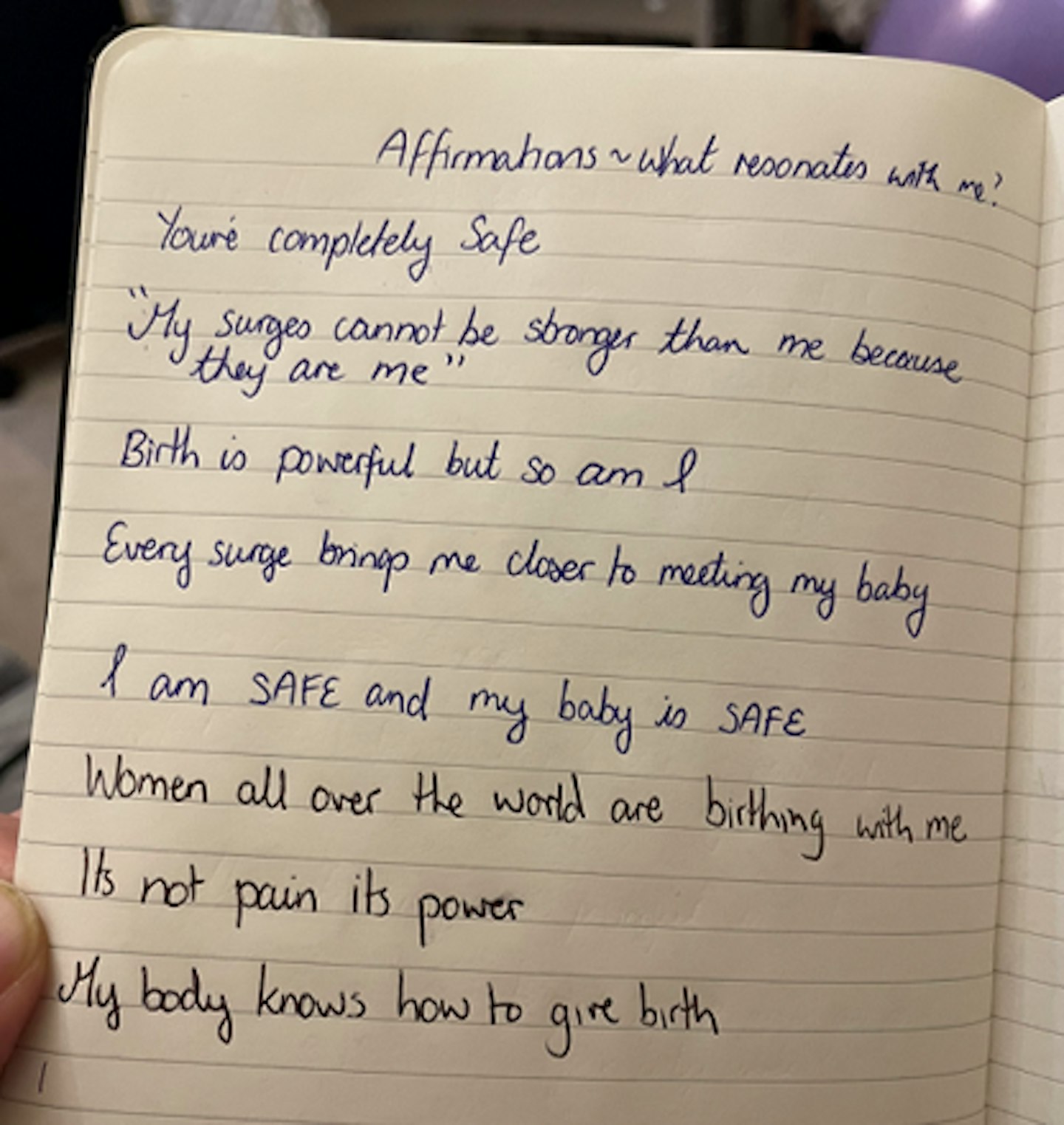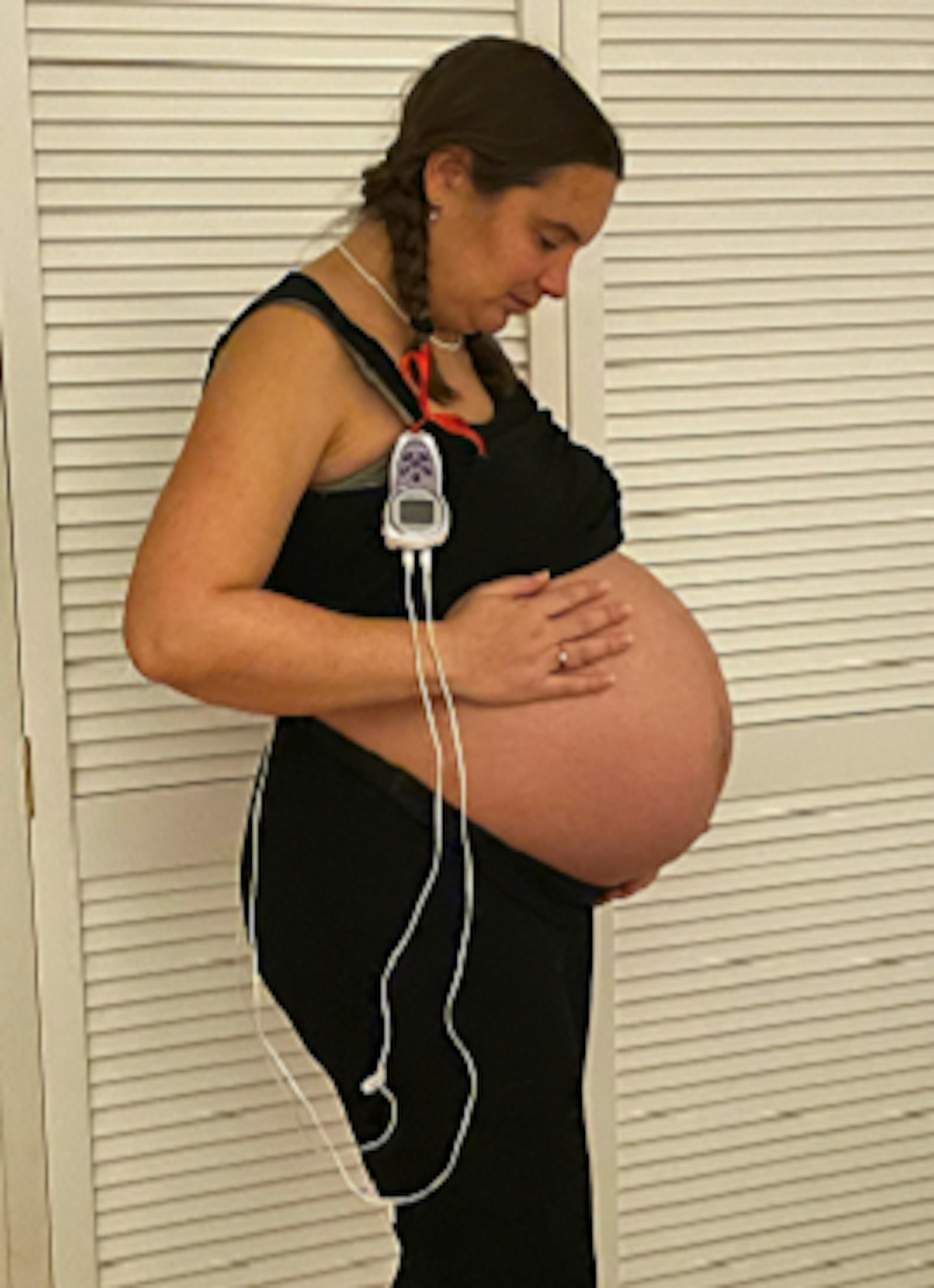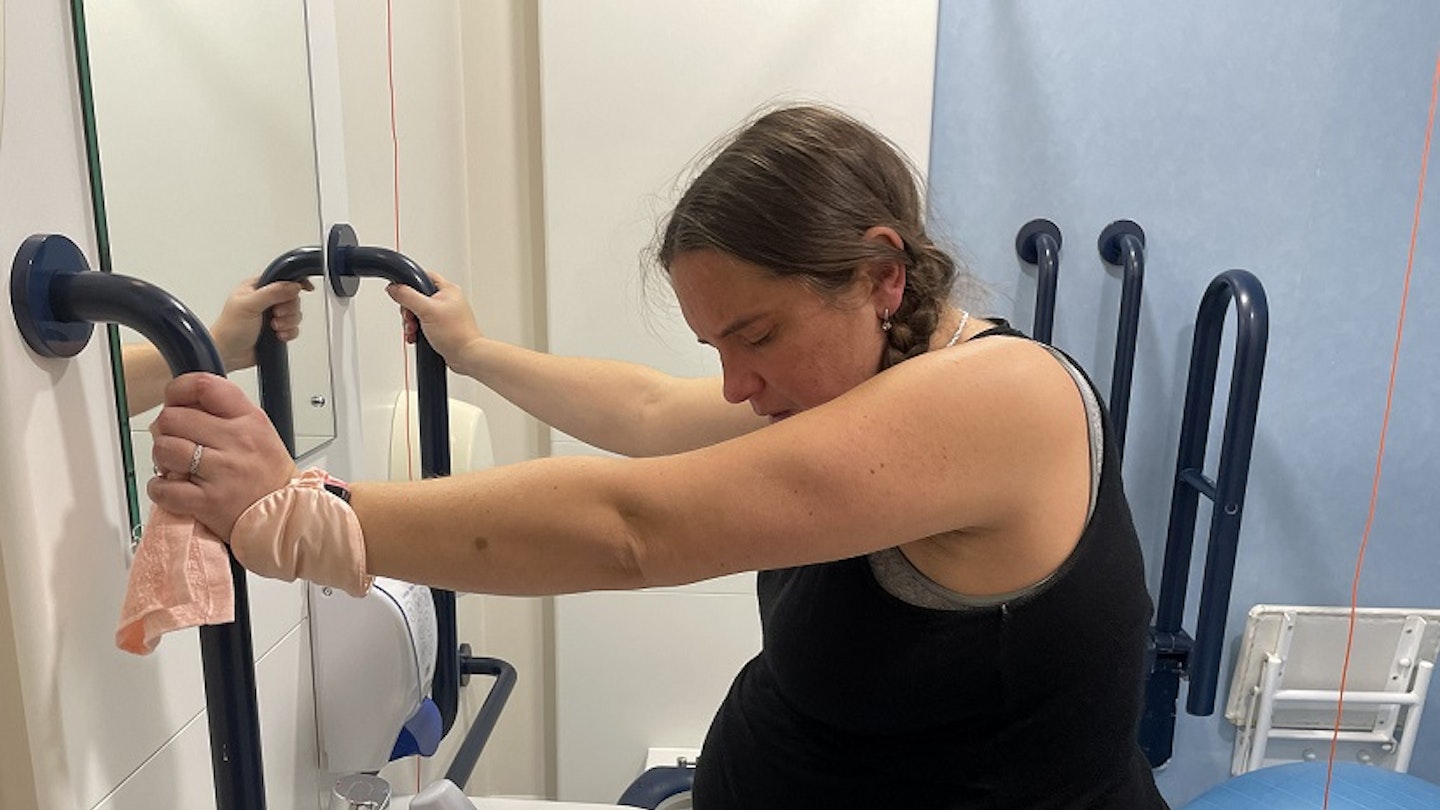Welcome to my blog on the rollercoaster that is new fatherhood. I’m Jim, my wife’s name is Daisy, I turned 50 last September and Daisy is a spritely 38. We had our first child in October – hence this, The Geriatric Dad Blog!
This is a proper, ‘in real life’ read from a man's perspective, so I hope you enjoy it and follow the series as we go.
This time: our birth experience!
I remember the day Daisy went into labour vividly, as if it were yesterday.
But I suppose that's to be expected. Having a child is, after all, about the most important thing that's going to happen to you in your lifetime.
It was Friday, October 14th and I'd had a bit of a pants day at work. Daisy had been suffering quite a bit in the latter stages of her third trimester, so I wasn't surprised when I got home to see that she was in pain and struggling to get around the house.
Being the trooper she is, she'd still managed to get all the housework done and cook an amazing vegan 'IKEA-style meatballs' dinner, which was delicious.
As I mopped up my plate with some garlic bread, hospital bags pre-packed by the front door in readiness for Sprout's arrival, Daisy nonchalantly asked me for my attention – and casually said she thought she might be in labour.
Daisy goes into labour!
As my heart started to beat a bit more rapidly and my bowel loosened ever so slightly, I tried to play things cool.
"That's nice darling! What makes you think you are? Have your water's broken?" I asked, before going to the fridge to get some pudding (and put the not-yet-opened bottle of NZ Marlborough sauvignon blanc back in the fridge).
Daisy followed me into the kitchen.
"No, they've not, but I started getting contractions this afternoon at 2pm," she replied. "I didn't want to tell you until now, as I knew you'd be worried and rush home."
By this stage I'd been home two hours and hadn't noticed Daisy having any contractions (I wondered if this was just me being a typical man, ignorant of what was happening in front of his nose!)
I said as such to her.
"I've been able to hide them from you, but they're starting to get stronger and more painful now," she said.
As if on cue, her face crumpled slightly as another one set in, lasting for 40 seconds or so before subsiding.
"Are you sure they're not those Toni Braxton Hicks fake contraction things?" I asked, trying to make Daisy laugh.
"Definitely not," she said, cracking out a small smile. "They're happening too regularly now."
This was obviously it, I thought.
Sh*t was about to get real and we were about to become, all being well, parents for the first time.
The first stage of labour
A few days earlier, Daisy had asked me to install an app on my phone to help us monitor her contractions (how long each contraction lasted, how long between each contraction).
The aim was to use it to help us decide the best time to go to hospital.
So I whipped out my phone and launched the app in readiness.
Sure enough, a few minutes passed before the next contraction began. I tapped the screen of my phone to start recording the data, tapping a second time when Daisy said the contraction was passing.
It lasted 45 seconds.
From the NCT classes we'd been on, I knew that there were three stages of labour Daisy would go through: the latent phase, which she was almost certainly in (which could last a long time, though little did I realise HOW long); the second phase (effectively the period from full dilation of the cervix through to birth) and the third phase (post-birth, cord-clamping and the ejection of the placenta).
We'd also been taught about the importance of creating and maintaining high levels of oxytocin in the whole birth process.
To boost Daisy's oxytocin levels, we'd talked about the importance of trying to remain calm, to carry on as normal during the latent phase, to try and stay relaxed.
RELAXED? I have an anxiety disorder – the words 'relaxed' and 'Daisy in labour' were not good bedfellows for my mental health!
Despite this, we sat down in front of the TV and started binge watching the classic BBC mockumentary, 'This Country' – one of Daisy's favourites.
We read and reread the affirmations she had made during the hypnobirthing course she'd been on: 'every surge brings me closer to my baby', and so on.
I read and reread the labour checklist Daisy had written, which outlined my tasks and responsibilities.
We agreed there was no need – not yet, at least – to call the hospital.

The guttural screams of labour
The evening seemed to move forward slowly. Very slowly, like a slow-motion real-time movie.
We'd eat some snacks, a contraction would arrive, we'd time and log the contractions, watch another episode of 'This Country' and laugh. Or try to.
Before eating more snacks.
(On a serious note, keeping your body fuelled during labour is extremely important. Chances are you'll be in labour for many hours more than it would take to run a marathon, so you need to keep the calories going in where you can).
By midnight, the contractions were getting closer together – four to five minutes apart, lasting up to a minute, occasionally more – but more worryingly, they were getting more and more painful.

It was time to whip out the TENS machine we hired to try and get Daisy extra pain relief.
I wired her up, four patches in a square just on her back below the bra strap, and she set the levels as she wanted them each time a wave of pain started.
Although she said the device definitely made a difference ("I couldn't have got through labour without it," she'd say later) each time a contraction arrived, despite the TENS machine Daisy would let out repeated guttural screams from the depths of her innards as her body continued the process of expelling the life within it.
I'll never forget those screams as long as I live. I'd never heard anything like them before. They were disconcerting at best, terrifying at worst in their tone, volume and despair. They communicated pain and agony. Raw and primeordeal.
All I could do was support Daisy – massage her, bring her food or drink, help her where I could.
In reality though I was impotent, a helpless old man paralysed in the headlights of his child's birth, increasingly frightened and unable to do anything meaningful to make things less painful for his wife – the person he cared about more than any other human in the world.
I was supposed to be her protector. I felt I was anything but.
Bring out the Doula!
A few weeks earlier (and rather late in the whole process) we'd decided to book the services of a Doula.
Much has been written about the benefits (or not) of bringing a stranger into your birthing experience, someone to witness and support you through the most intimate and physically demanding event you're ever likely go through.
As we had no family close by to support us, we felt having someone around who knew what was happening, had been through it multiple times and could provide us with reasoned advice and expertise (if needed) could only be of benefit.
At around midnight, we decided to call ours – Sarah. She'd said to call when we needed her, whatever the hour of the night. And now was the time.
Daisy was in increasing amounts of pain, levels of agony she'd not experienced before. She started to dread the next contraction arriving. Tears flowed, anxiety mounted.
All the courses we'd been on, the NCT classes, the hypnobirthing – none really prepared us properly for what we were going through. Not really.
Reinforcements were needed. Doula Sarah was called.
Using our BRAIN
When she arrived at around 1am on Saturday morning, October 15th – almost 12 hours into Daisy's labour – Sarah instantly brought with her an aura of calm.
"This is normal," she said in a slow, hushed but authoritative voice.
"The latent phase of labour can go on for a long time. Try not to worry. It's important Daisy stays as relaxed as possible and produces as much oxytocin as she can."
I certainly relaxed a bit having her with us.
Sarah had 'doula-ed' over 20 births over the last three years or so and, while every birth is different in the way everything turns out, there are of course similarities as well, in both process and the options that are likely to present themselves before baby pops out.
Throughout our previous meetings, she'd always been keen to keep emphasising that decision making as to what would happen through the birth was down to us.
We didn't have to take any of the advice offered by medical staff; we could choose to progress as we wanted.
As I mentioned in my last blog, Daisy and I had researched heavily the decisions we'd likely have to make during our birth experience - and we'd decided to use the acronym 'BRAIN' to help us make those decisions when the time came.
As a reminder, BRAIN stands for:
B: What were the benefits of whatever options we were given / had to choose from
R: What were the risks of each option
A: Were there any alternatives?
I: What did our intuition say?
N: And what might happen if we did nothing?
This, along with the three birth plans we'd written and were taking to the hospital with us, we hoped would help us get the best birth experience possible and - crucially - help us make the right decisions at the right time.
Time to call the hospital
The night crawled on, punctuated regularly by Daisy's screams as each contraction arrived, reached its zenith and then faded again. I felt sorry for our neighbours, who I was sure could hear everything through the paper thin partition walls that separated our abodes.
Between contractions, things were almost normal. Daisy tried to relax, we talked, reminded ourselves of our birth plans. There was even the odd laugh.
Late night TV flickered away in the background, now unwatched. Someone spun a roulette wheel on a random casino channel as unseen gamblers placed their bets.
The cat kept getting under our feet as it demanded feeding, oblivious to what was happening. The guinea pigs squealed in the background whenever I opened the fridge to top up Daisy's supply of fizzy water or get her some energy snacks. They still needed their hay and carrots.
Outside, the darkness was like an enveloping black ink, an alien world, removed and detatched from us – our everything was in the house, and nothing beyond it.
By 6am, the contractions were coming every 5 minutes, consistently. Occasionally there'd be a 3 minute period between them, but only occasionally: not enough to make the app say 'GO TO HOSPITAL NOW!'
My intuition was starting to tell me something wasn't quite right, though.
By 8am Daisy's contractions were the most painful they had been – violent spasms that racked her body in pain – so I said to Sarah Doula, maybe now it's time to call the hospital.
It just seemed that things to me weren't progressing as they should. Sarah tried to reassure: "The latency phase of labour can last a long time, sometimes days," she said.
But with contractions THAT close together and THAT painful?
No woman in the world could cope with what Daisy was going through for days on end. It was a physical impossibility. Sooner or later, something would have to give.
I picked up my mobile and dialled the labour ward at our hospital of choice, Hinchingbrooke in Huntingdon, Cambridgeshire.
Off to hospital we go!
We'd loved going to 'Hinch' for our appointments and scans. Their staff were friendly and welcoming and we were given time in the appointments to talk about whatever we wanted, for as long as we needed. There were rarely delays in getting seen and the place wasn't heaving with Covid-ridden apocalyptic zombies.
The head midwife on duty answered the phone.
I ran through where we were at: Daisy was in labour, contractions were five minutes apart but occasionally three minutes. Her waters hadn't broken, but she was in a lot of pain, despite being dosed up on paracetamol.
Like, she was in a LOT of pain.
They agreed we should go in so Daisy (and baby Sprout) could get checked over. A room would be assigned to her and they would stick her name on the admissions board.
We were expected.
"THIS IS IT!" I thought as we put our bags in the car, got in and pulled away from the driveway in the cool of the diluted early-morning sunlight. Browny yellow leaves littered the lawns of our neighbours' houses – autumn had arrived. A neighbour waved, not knowing. I craved his normality.
"Next time we're back here, we'll have a new human with us," I said to Daisy as we drove down our road and off toward the A1, Doula Sarah following behind.
Somewhat naively, I thought we'd be back with baby Sprout later that day.
But oh no – it wasn't to be. I couldn't have been more wrong if I'd tried. Little did I know of the complications and, ultimately, the emergency that lay ahead of us.
NEXT TIME: Daisy's labour carries on and on and on! Our fight to get admitted to the labour ward when Daisy was obviously in distress and a birth experience that did not go anywhere near how we'd envisaged, ultimately culminating in an urgent c-section...
Jim's other blogs: to read all Jim's blogs - with all the advice and experiences he and Daisy have had - see his author page: https://www.motherandbaby.com/author/jim-foster/
